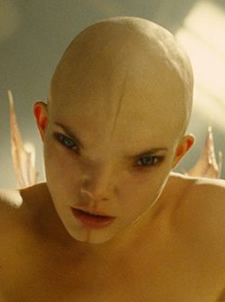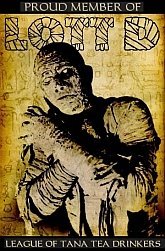While other directors choose to infuriate and nauseate their audiences with outrageous human centipedes, Darren Aronofsky goes to the ballet instead to unleash Black Swan, a movie that releases the repressed demon within through restrained gore and unrestrained pirouettes.
Natalie Portman plays the emotionally crippled Nina Sayers, a New York City ballerina whose repressed sensuality and domineering mother (Barbara Hershey) keep Nina's bedroom crowded with pink, stuffed animals, and her social life as busy as the one the little dancing ballerina in her music box has.
When offered the chance to play the dual role of the White and Black Swans in Tchaikovsky's ballet Swan Lake, Nina's descent into madness, and ascent into freedom, begins. Goading her on is her director, Thomas Leroy (Vincent Cassel), who, like the evil sorceror, Von Rothbart, wants to control her passion. It is this transition from White Swan, which Nina dances flawlessly, to Black Swan, which requires her to unleash a sensual side long repressed that makes Black Swan almost like watching Carrie's Carrie White dressed in a tutu. It is an engrossing and jarring farandole macabre, one filled with horrific moments for Nina and us as her mind splinters into paranoia and hallucination, and feeds on its fears.
Much of Black Swan is filmed in uncomfortably unsteady and confining closeups. Rarely do we see beyond what Nina sees or imagines. Like the mechanical ballerina confined to her music box, Nina's world is confined to her apartment, her bedroom, and the ballet hall where she brutalizes her body with constant practice. A real or imagined rivalry between her and Lily (Mila Kunis), an unbridled ballerina whose sensuality makes her a natural to dance the role of the Black Swan, erupts into more self-torture for Nina. Her obsessive compulsive behaviors grow into waking nightmares. In a scene reminiscent of the nasty face peeling in Poltergeist, Nina picks at a scab until the blood flows red. Her self-scratching leaves bloody tears she's not conscious of making. Her paranoia leads to a smashed and bloody dressing room mirror.
Aronofsky doles out gore to emphasize the physical punishment Nina is going through, and lavishes it on in one queeze-inducing hallucination: a closeup of a cracked and bloody toenail; skin-peeling; blood flowing from under a door. I wonder how the older audience in the theater felt (I was in Florida when I saw Black Swan) seeing these common horror movie images in a movie marketed as a drama and thriller?
Black Swan is a triumph of technique, tension, and metamorphosis as Nina becomes the Black Swan. And it is a horror movie. Make no mistake about that.









![[REC] 2 [REC] 2](../../../../.a/6a00d83451d04569e20133f0cb242c970b-800wi.jpg)






